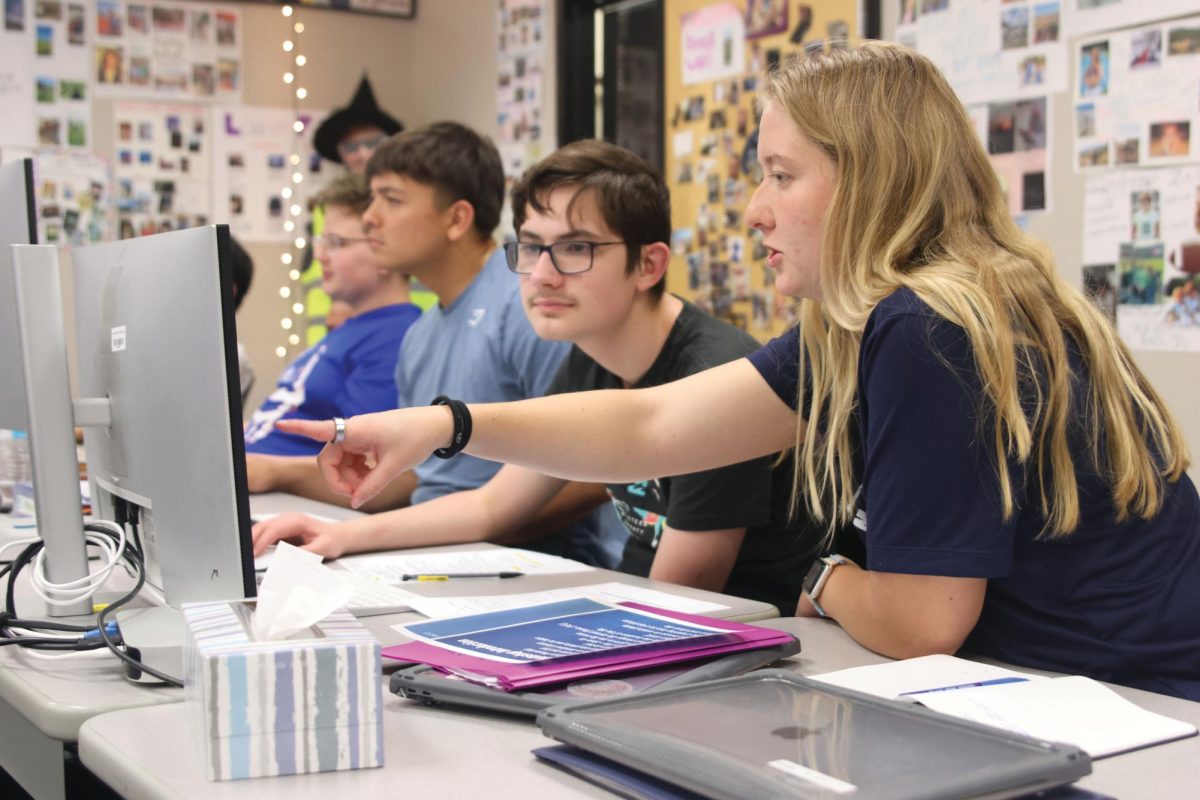As soon as students walk in science teacher Ryan Johnston’s classroom, they are required to put their phones into the phone locker. Johnston is one of the many teachers across the school that have adopted this no phone policy in hopes of combating cell phone distractions in the learning environment.
This is not the first time that Johnston has used this no phone policy in his class. Due to the COVID-19 pandemic in 2020, he stopped enforcing the policy. However, he decided to read the policy after seeing all the issues that phones were causing. 
“When COVID happened, I had half my class at home, half my class here. People wanted to stay in contact with their loved ones and I got away from the phone policy,” Johnston said. “But then when students were on lockdown, they got super addicted to their phones even more than they were and there were a lot of mental health issues. I saw it for a couple years and I thought that we can’t do this anymore. That’s why I decided to go back to the phone locker.”
There are some students who do not agree with a no phone policy. Freshman Ava Munsey believes phones should stay with students for communication purposes.
I believe personally that we should have our phones in our backpacks or with us at all times because certain things can happen where we always need our phones,” Munsey said. “If our parents text us, we need a way that we can communicate to them, and since we’re in high school, we should be able to have our phones since it’s our property.”
Spanish teacher Edith Paredes nearly added a phone caddy in her classroom because phones were hurting student engagement.
“I know for me and for the rest of the staff, it’s been really frustrating because we noticed a huge decline in engagement, learning and participation,” Paredes said. “Engagement kind of covers it all. Students are not participating, aren’t paying attention and aren’t learning.”
 For Johnston, the phone locker has been a success. Since readopting it, Johnston has noticed a huge rise in participation and completion.
For Johnston, the phone locker has been a success. Since readopting it, Johnston has noticed a huge rise in participation and completion.
“Participation has skyrocketed,” Johnston said. “I have almost 100% completion on every single one of the assignments, whether it be general physics or AP Physics, which didn’t happen when phones were in the classroom.”
Junior Ian Weatherman feels that there are both positives and negatives to the way teachers handle phones in the classroom.
“In some classes where the content is harder, it can be good to not distract the students who need to pay attention, but also letting students keep phones shows a sign of respect for the students,” Weatherman said.
Paredes ultimately did not enforce a phone caddy because she saw it to be more productive to treat students as adults.
“I think when I treat my kids as young adults, they kind of appreciate that. I do not want to have to confiscate your phones and make them put them in a caddy,” Paredes said. “I think they kind of appreciated that, and in return, they tried to follow my request to put your phone away. I cannot say that this is working 100% but it takes a while to get rid of a habit.”












